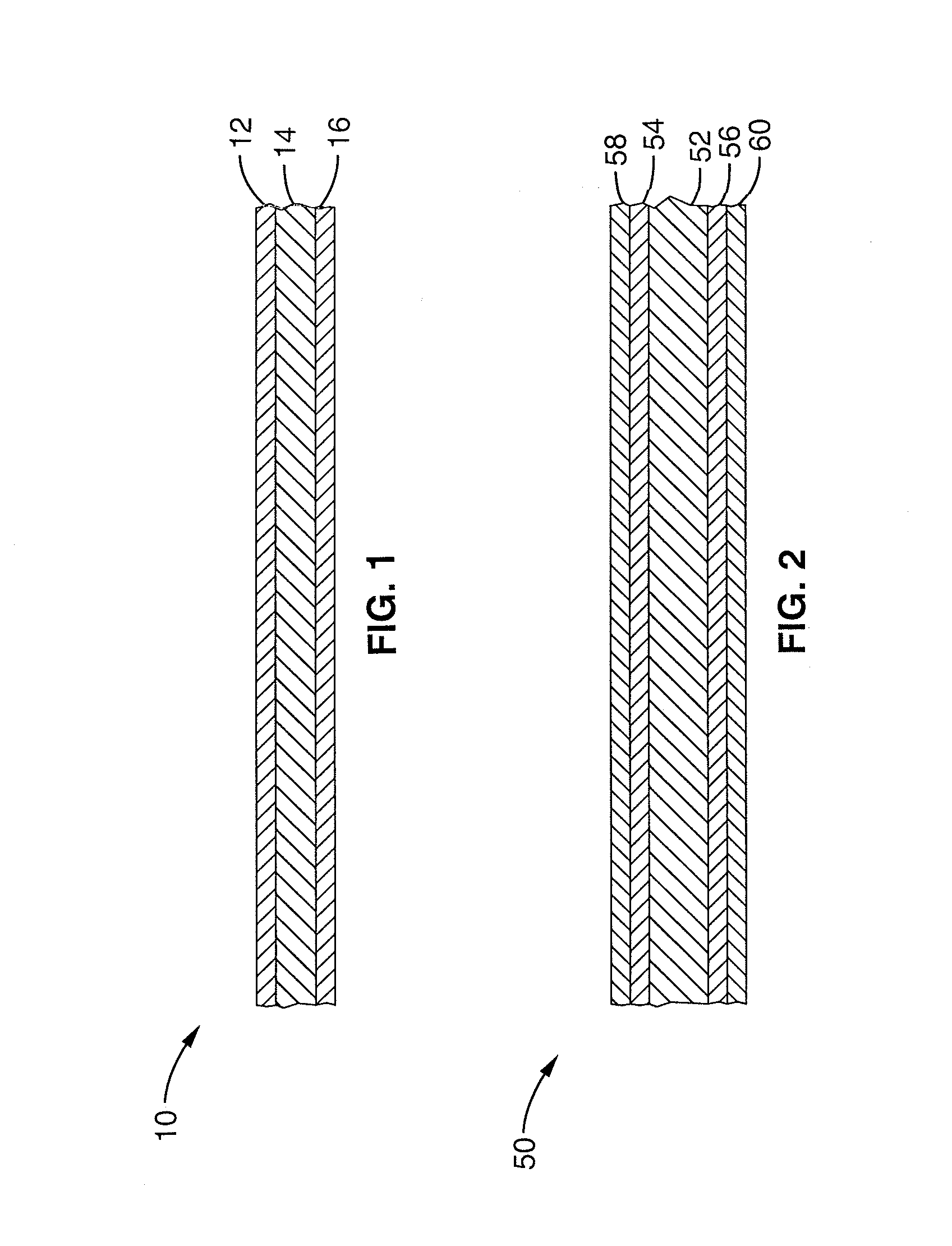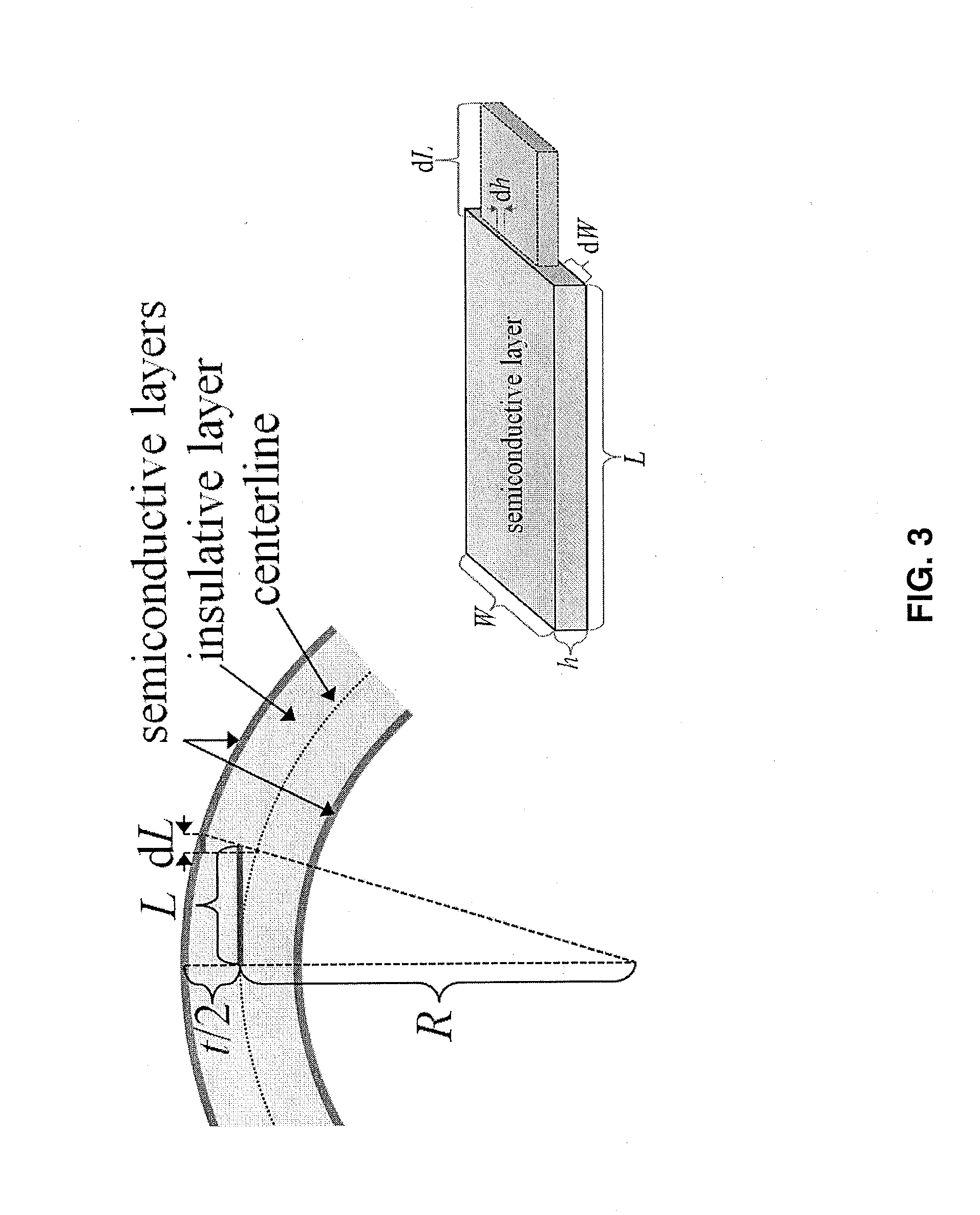Flexible and moldable materials with bi-conductive surfaces
a technology of bi-conductive surfaces and flexible materials, applied in the field of functionalized particle polymer matrix composites, can solve the problems of high noise levels of piezoresistive strips by themselves due to common-mode noise, and the current cost of motion capture rooms and lidar is prohibitively expensive for general and personal use, etc., and achieves the effects of convenient manufacturing, low cost, and convenient us
- Summary
- Abstract
- Description
- Claims
- Application Information
AI Technical Summary
Benefits of technology
Problems solved by technology
Method used
Image
Examples
example 1
[0046]In order to illustrate the methods for fabrication and the functionality of the resulting bi-conductive material construct, a composite structure composed of two outer sheets of conductive particles dispersed in a flexible polymer sandwiching a thin polymer layer was produced.
[0047]The conductive material layers were produced from 20 grams of poly di-methyl silane (PDMS); 1 gram of PDMS curing agent; 5 grams of Acetylene black (AB) and 57.7 grams of Toluene solvent. In this illustration, the non-conductive center material was produced from 20 grams of poly di-methyl silane (PDMS) and 1 gram of PDMS curing agent.
[0048]A slurry of conductive material was prepared as follows:
[0049]1) PDMS and curing agent were mixed rigorously;
[0050]2) Mixture was de-gased thoroughly so that no trapped air bubbles were visible. This was done by using a light vacuum and allowing the ink to sit idle for more than 15 minutes;
[0051]3) Acetylene black was added in 0.5 gram increments and mixed;
[0052]4...
example 2
[0063]The flexible bi-conductive material of the present invention can be used in a variety of fields including shielding, flexible capacitors, and strain gauges. As an illustration of a strain gauge configuration, a semiconductor-insulator-semiconductor composite structure with electrodes attached at the boundary was produced and tested.
[0064]The electrical properties of the material were sampled by applying currents and measuring resulting voltages at the boundary electrodes. The piezoresistive and geometry changes of the semiconductor layers results in resistance variations across the surface according to local curvature. Through sufficient sampling, a system of equations can be solved for the interior curvature properties. The local curvature data is integrated to yield an approximation of the surface shape.
[0065]The system preferably contains a single laminate sheet to reduce the requirements on wiring. While a single strain-gauge layer is sufficient for determining purely stre...
PUM
| Property | Measurement | Unit |
|---|---|---|
| thicknesses | aaaaa | aaaaa |
| thickness | aaaaa | aaaaa |
| thickness | aaaaa | aaaaa |
Abstract
Description
Claims
Application Information
 Login to View More
Login to View More - R&D
- Intellectual Property
- Life Sciences
- Materials
- Tech Scout
- Unparalleled Data Quality
- Higher Quality Content
- 60% Fewer Hallucinations
Browse by: Latest US Patents, China's latest patents, Technical Efficacy Thesaurus, Application Domain, Technology Topic, Popular Technical Reports.
© 2025 PatSnap. All rights reserved.Legal|Privacy policy|Modern Slavery Act Transparency Statement|Sitemap|About US| Contact US: help@patsnap.com



